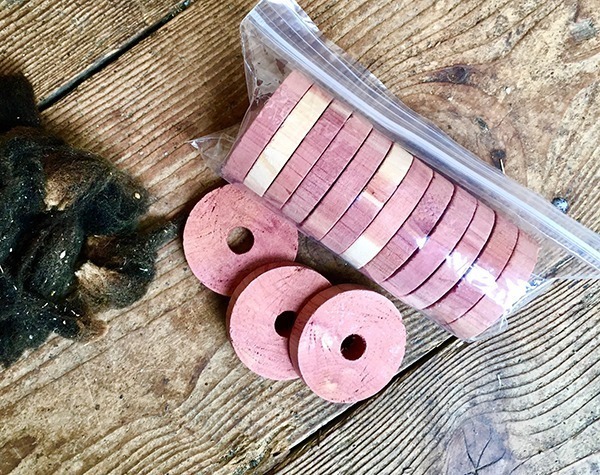The unofficial start of summer with Memorial Day weekend has many of us thinking about storing our winter woolens away for the season. Ensuring that our hand knits will be clean and in good repair when we’re ready to pull them out of storage in the Fall, will allow us to start wearing them without delay when we’re ready to bring them back into wardrobe rotation.
Martha Stewart has a terrific article about mothproofing that includes the how and why of the multiple steps involved in preparing your woolens to ensure the best results. You can find the full article on her website here.
In a nutshell, “cleaning woolens rids them of moth and beetle eggs and also eliminates perspiration remnants and food spills, which attract and nourish pests. Moths and beetles don’t eat items made of synthetic or cotton fabrics, but you should clean those, too, if you store them with woolens.”
Taking the time to inspect each item before putting it away for the season can give you a moment to look for signs of wear that may need a bit of darning. We also like to de-pill our well loved garments to revitalize them. This way they will emerge from storage ready to wear and looking their best.
Since the pests that love to munch holes in our woolens are so small and able to wriggle into the tightest of crannies, the best short term storage is air-tight. If you are planning to put things away for stretches of time longer than a year, you may want to do a bit of web research to find alternate options that will be impervious to small pests and yet allow your clothes to breathe. Trapping moisture inside an airtight container with your woolens would lead to another set of problems.
To clean our shop samples, we add like colors into a top-loading washer that will allow us to soak the items without agitation. You could also soak items one at a time (particularly if you have concerns about colors bleeding) in a sink, large bowl or bucket. We add a splash of Eucalan, but you may want to consider using any of the other wool washes available on the market. The milder the detergent the better.
After a 20-30 minute soak, we allow the machine to spin out the items removing as much water as possible. You could squeeze your items (without wringing them) and then roll them up in dry towels like a burrito. Walking across the burrito will remove even more water and render your woolens just damp to the touch.
Lay your items out someplace flat, out of direct sunlight, where they can dry undisturbed. You can use this opportunity to re-block your items into your desired measurements. You may want to select your washing day based on the weather forecast, selecting a time when you’ll have several dry days in a row giving your woolens plenty of time to dry completely. If the forecast doesn’t cooperate but you have a dehumidifier, you may want to dry your woolens in close proximity to it for similar results. Here in the damp Northeast, that can be essential for success.

Cedar and lavender both provide natural pest protection (with some limitations) that leave a pleasant scent behind. We’ve recently received a small shipment of some locally crafted cedar hanger rings. Each dozen is available for $15 and you can find them on our website here. Adding these to the cleaned items in your closet or within air-tight storage containers can help maintain your hand knits’ integrity.
If you find holes or signs of moth damage, your best resort is to freeze those pests out! We “put items in sealed plastic bags, squeeze out air, and freeze for a few days. Take the bags out, let them return to room temperature (or better yet, place them in a hot car in the summer sun), and then repeat. In case of condensation, let clothes air out before storing again.”
If you need some expert help repairing larger holes, give us a call and we can put you in touch with a local knitter who has worked miracles for our customers over the years. Susan has provided flawless finishing, button hole repair and mending work for many of our friends who are are too busy or reluctant to try their hand on precious hand knits that took many hours to complete.
Feel free to give us a call if you have any questions as you dive into washing your woolens for summer storage. We’d love to share our suggestions and any additional tips that could help.
